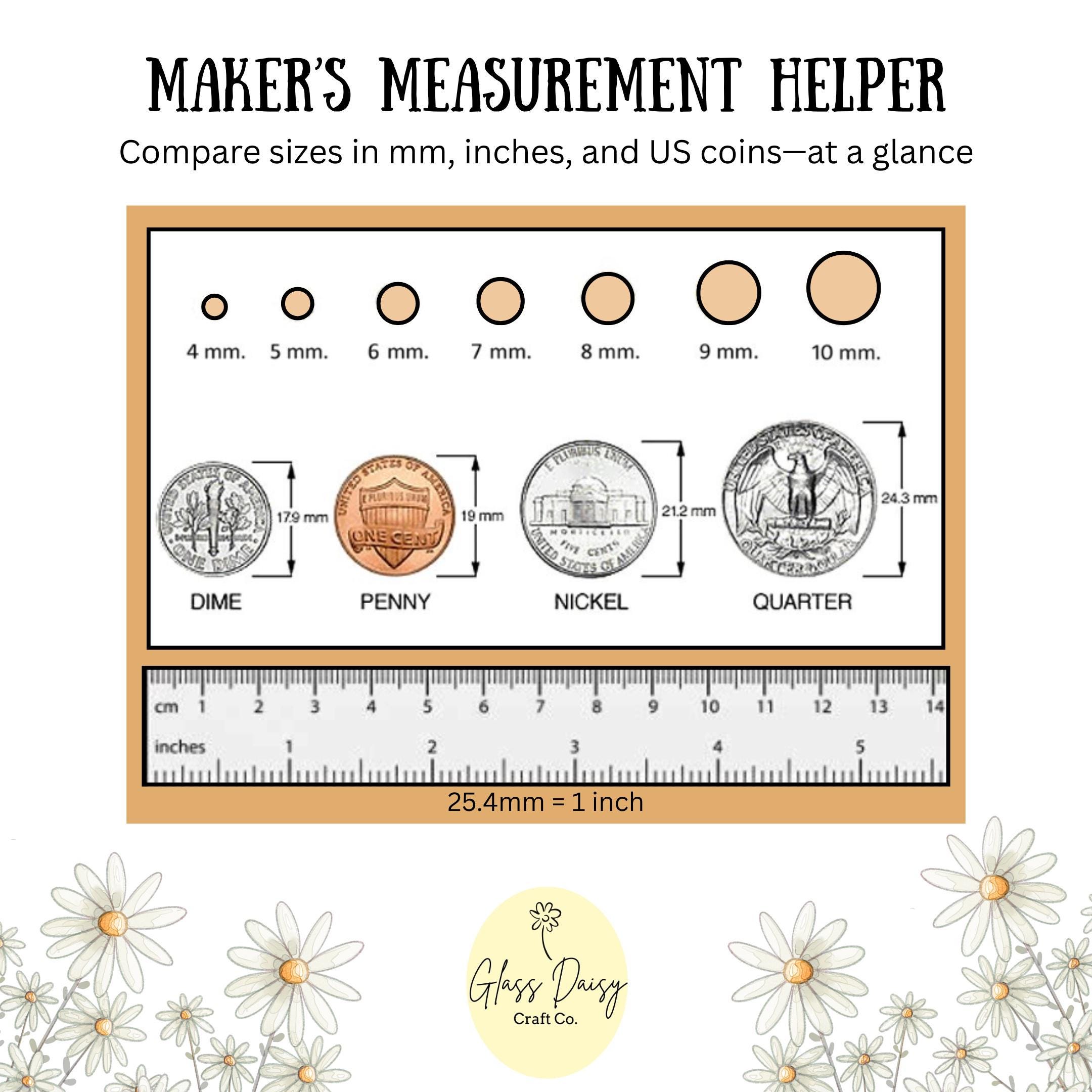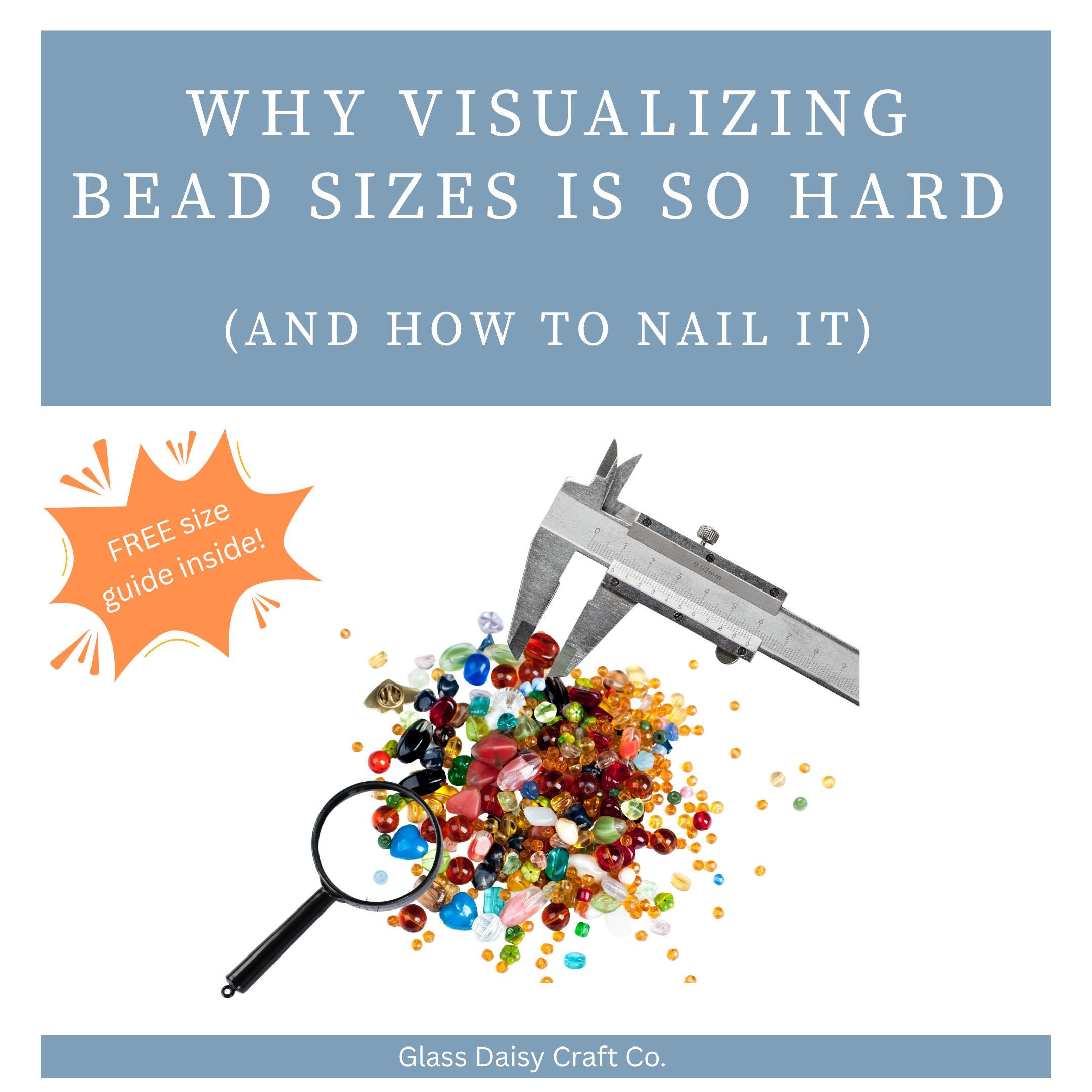If you’ve ever opened a package of beads or other craft supplies and thought, “whoa—that’s way smaller than I thought,” you’re not alone.
Most jewelry and craft supplies are listed in millimeters, and for those of us raised on the imperial system, it’s hard to translate the numbers into a real-world feel—especially for tiny parts.
Metric vs. Imperial: the first speed bump
If the imperial system is what you know, your brain stores “inch” references, not millimeters. So when you read “6 mm,” your mind reaches for a familiar size anchor and then makes a guess. Guesses are shaky—particularly under an inch, where 1 mm matters a lot. (Quick anchor: 25.4 mm = 1 inch.)
Don’t count on sellers to list inch conversions. The reality is that metric is a better fit for small craft measurements. For example, even those raised on the imperial system will struggle with a hole size listed as 0.0708" when the part is simply 1.8 mm. Metric is cleaner and more precise for tiny dimensions.
Same number, different “feel”: 8 mm bead vs. 8 mm cab
Another sizing trap is assuming all 8 mm parts feel the same in hand. They don’t. An 8 mm round bead reads larger because it has volume in every direction. An 8 mm flat cabochon has the same width, but far less height, so it looks and feels smaller. Buyers who picture an 8 mm bead are often disappointed by an 8 mm cab—it’s flatter, so the visual impact is lighter. (And yes, I have a small giggle when a review for an 8 mm cab says, “these are really small.” Eight millimeters is small! That isn’t a flaw—it’s the measurement doing exactly what it says. 😊)
Flat vs. 3D: a quick story
Years ago, I took a friend to see my home under construction—just the foundation had been poured. We had walked a finished model minutes earlier, but standing on that flat slab, she was convinced the builder poured it wrong. It looked too small. Like, call the authorities, there's been a terrible mistake, small.
Nothing was wrong; our brains simply struggle to judge scale when something is flat compared to something with more dimension. Beads, charms, and findings trigger the same misfire. This is a common spatial-visualization challenge.
My early “oops” (and the fix)
When I started crafting, I used schoolyard tricks like “the width of your pinky is about 1 cm.” Helpful-ish, but not precise. I still ordered beads that felt smaller than expected.
The fix was simple: I began using a size reference tool every time I shopped, and the surprises stopped. That’s why I made a free Maker’s Measurement Helper - it helps me to compare bead sizes to U.S. coins and see mm vs. inches at a glance.

Tips to get the size right—every time
- Read the listing details carefully.
- Convert before you buy. 6 mm ≈ 0.24", 8 mm ≈ 0.31", 10 mm ≈ 0.39", and 25.4 mm = 1".
- Think about 3D presence - beads have more dimension; cabs are flat.
- Check scale photos - when a seller shows a ruler or in-hand photo, zoom in if needed to get a better feel for the size.
A note on reviews
If an item arrives exactly to the listed measurements but looks smaller than you imagined, that’s a scale/visualization issue, not a product flaw. If a product is smaller than advertised, that’s on the seller—reach out and ask for help. Most small shops (us included) will address it quickly. Occasionally, manufacturers reduce dimensions to save materials and don’t disclose it. When we reorder, those changes can slip by—your heads-up helps us update the listing and make it right quickly.
Save the guide
Save the Maker’s Measurement Helper to your phone for quick reference while you shop. Use it to convert mm ↔ inches and sanity-check sizes against coins and a ruler. Fewer surprises, happier unboxing! 🌼

